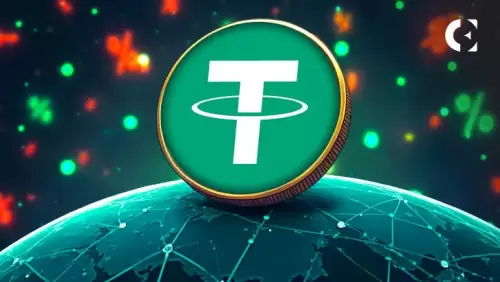USDT's on-chain activity explodes, now commanding 40% of blockchain fees. What's driving this surge, and what does it mean for the future of crypto?

Yo, crypto fam! Tether's USDT is straight-up crushing it on the blockchain scene. Transfers of this stablecoin now account for a wild 40% of all blockchain transaction fees across nine major networks. Let's break down this on-chain supply surge and what it means for you.
USDT: The Fee-Generating Machine
Tether CEO Paolo Ardoino dropped the mic, revealing just how much USDT dominates on-chain activity. We're talking Ethereum, Tron, Solana – you name it, USDT's there, racking up the fees. It's not just about moving money around; it's about how deeply ingrained USDT is in the crypto ecosystem.
Tether's Massive Financial Footprint
Tether's market cap blew past $100 billion, hitting $104.1 billion in early 2025. That's like 8.6% of the entire crypto market value! And get this: they're sitting on around $98 billion in U.S. Treasury bills, making them a major player in traditional finance too.
Why USDT Drives Network Economics
People want the cheapest way to move their USDT, plain and simple. That's why Tron and Binance Smart Chain see so much USDT action – those transaction fees are dirt cheap, like a penny or two. Plus, in places where the local currency is about as stable as a Jenga tower after a quake, USDT is a lifesaver for payments, remittances, and savings.
The Regulatory Buzzkill (and Tether's Play)
Of course, regulators are watching Tether like hawks, worried about its size and influence. They want more transparency and audits, and bills like the U.S.’s GENIUS Act are trying to put stablecoins under stricter control. But Tether's not backing down; they're even planning their own zero-fee blockchain called Plasma. Talk about a power move!
My Two Satoshis
Look, USDT's dominance is a double-edged sword. On one hand, it's a testament to its utility and widespread adoption. On the other, it raises concerns about systemic risk. If something happens to Tether, a lot of chains and apps could feel the pain. That's why it's crucial for Tether to play nice with regulators and keep things transparent. Also, the rise of competitors like Ethena USDe, with its innovative yield-generating mechanism, could shake things up. Ethena's growth to over $6 billion shows people want stablecoins that also earn them something extra.
The Bottom Line
USDT isn't just another stablecoin; it's a cornerstone of the blockchain economy. Whether you're a crypto newbie or a DeFi degen, keep an eye on Tether. It's shaping the future of finance, one transaction fee at a time. And with the rise of other stablecoins, the game is only getting more interesting. So buckle up, because this is one wild ride!






















































































